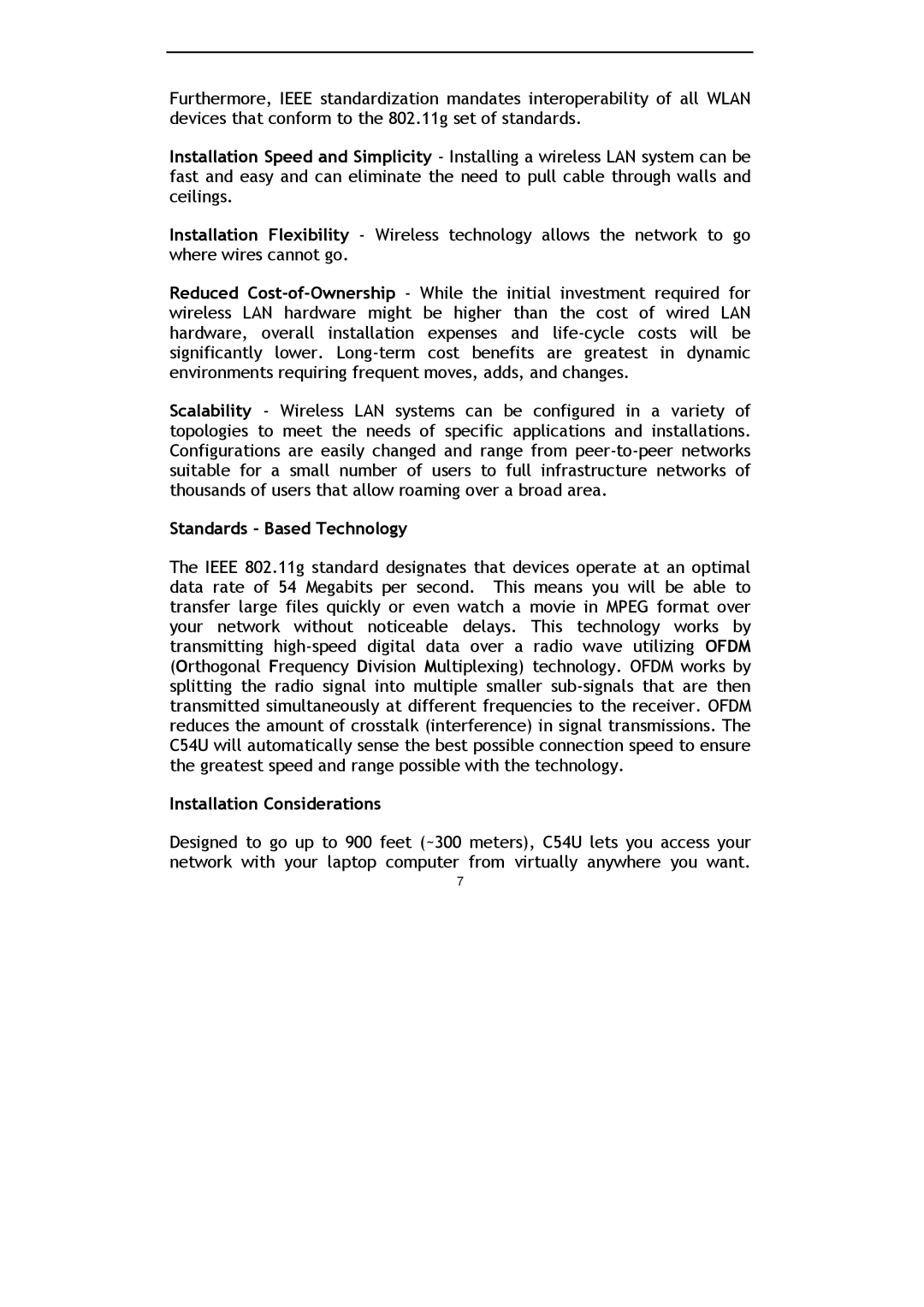Furthermore, IEEE standardization mandates interoperability of all WLAN devices that conform to the 802.11g set of standards.
Installation Speed and Simplicity - Installing a wireless LAN system can be fast and easy and can eliminate the need to pull cable through walls and ceilings.
Installation Flexibility - Wireless technology allows the network to go where wires cannot go.
Reduced
Scalability - Wireless LAN systems can be configured in a variety of topologies to meet the needs of specific applications and installations. Configurations are easily changed and range from
Standards - Based Technology
The IEEE 802.11g standard designates that devices operate at an optimal data rate of 54 Megabits per second. This means you will be able to transfer large files quickly or even watch a movie in MPEG format over your network without noticeable delays. This technology works by transmitting
Installation Considerations
Designed to go up to 900 feet (~300 meters), C54U lets you access your network with your laptop computer from virtually anywhere you want.
7
